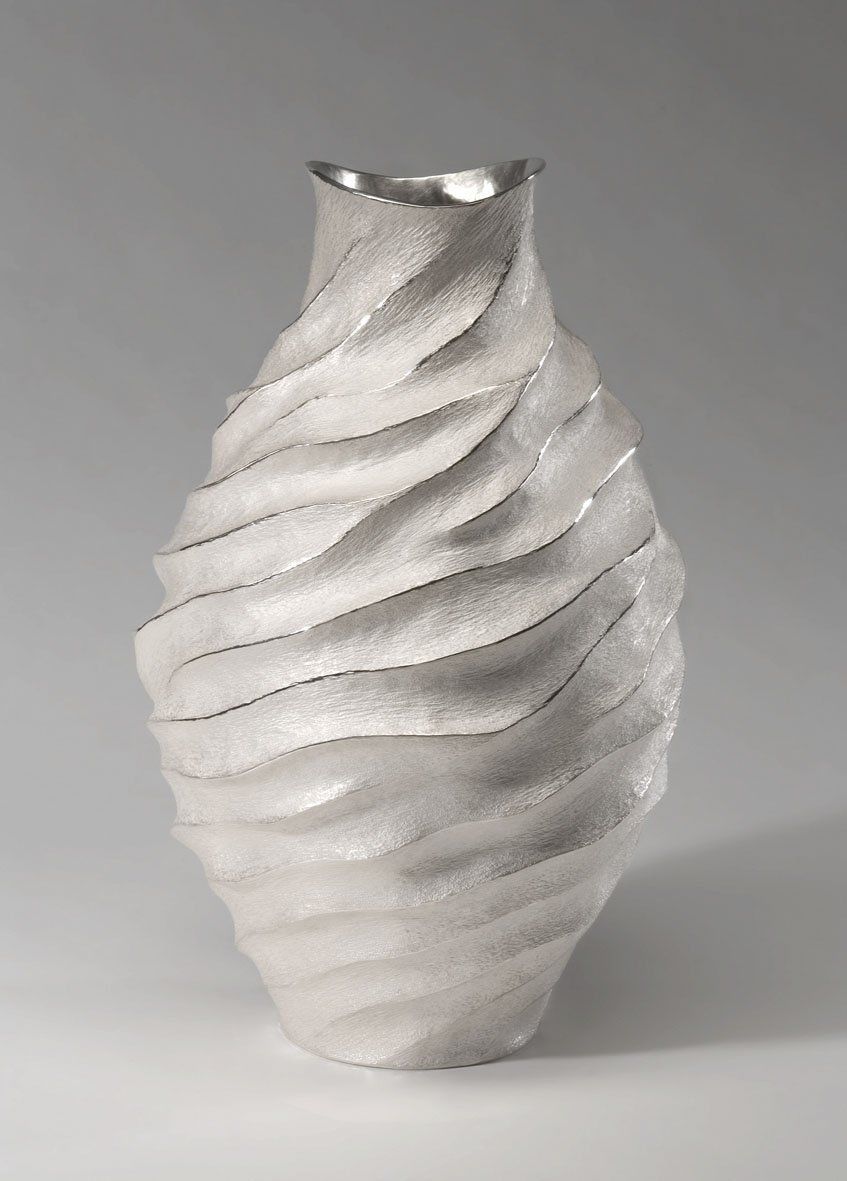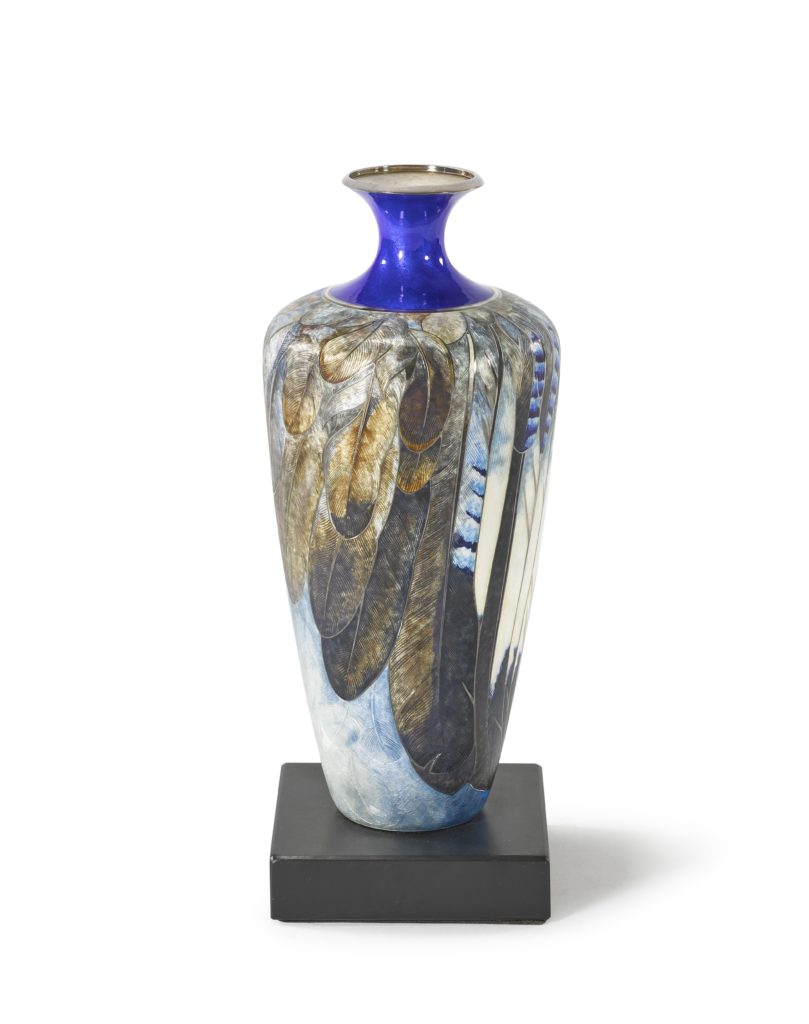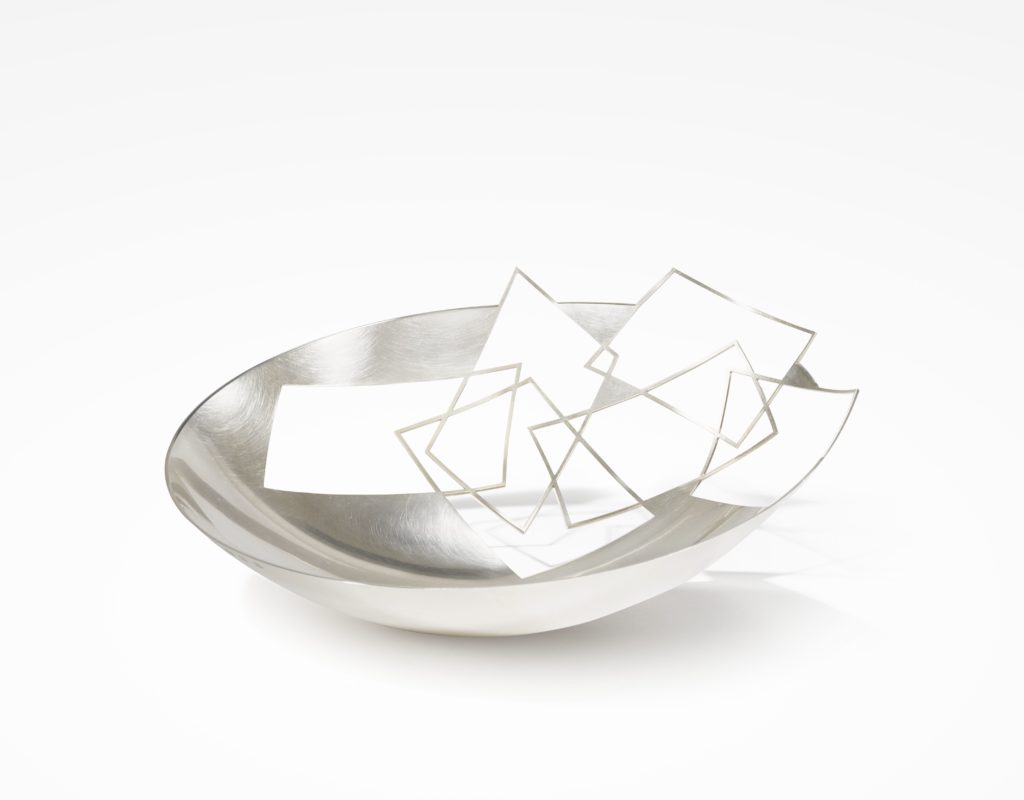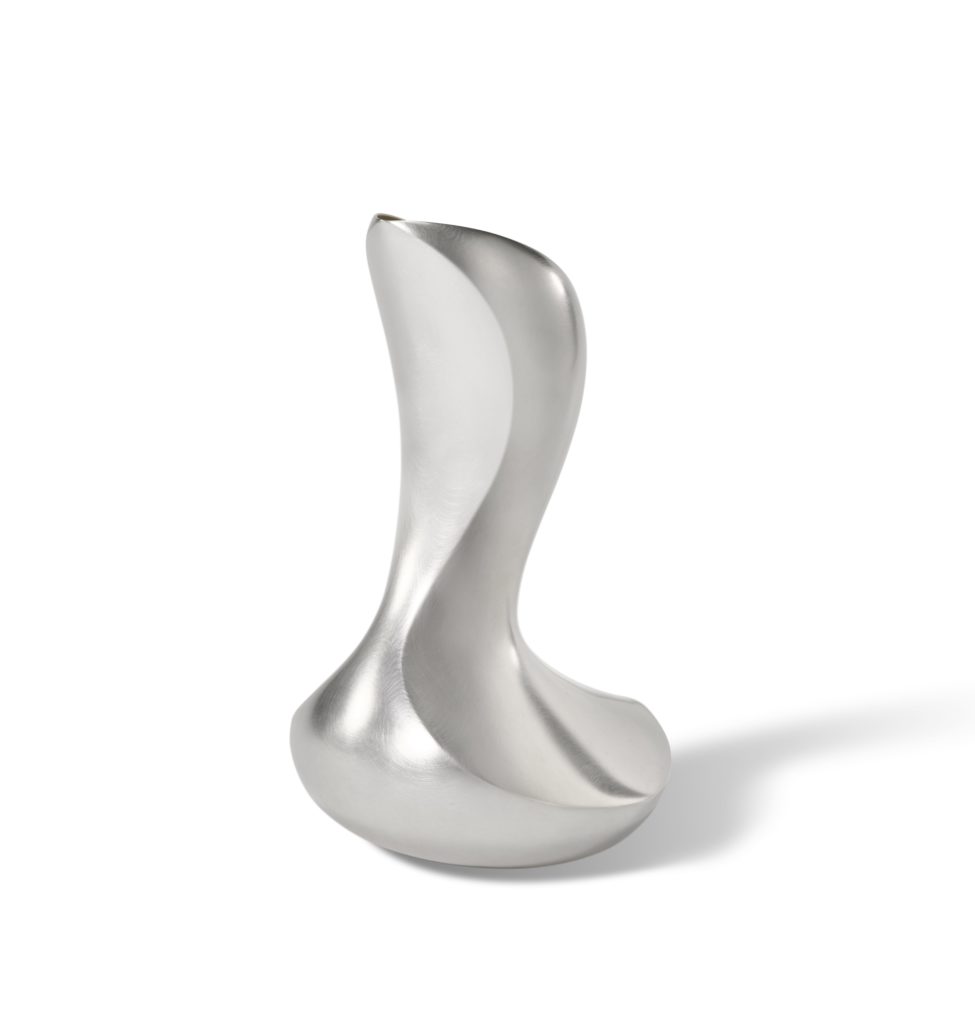40 years, 40 makers

Dr Dora Thornton
We put on an exhibition every year of pieces selected from the Goldsmiths’ Company Collection to accompany Goldsmiths’ Fair and highlight the skills of British designer makers. We choose a different theme each time, prompting new questions, research and thinking. This year’s show, 40 years, 40 makers, marks the 40th anniversary of the Fair, which since 1983 has been one of the most significant platforms the Company provides for the designer maker community. The Fair has given hundreds of jewellers and silversmiths working at the highest level of the craft the opportunity to show their talents and sell directly to the public. It has launched careers and has allowed makers to communicate their expertise in fusing traditional techniques in precious metal with the latest digital technologies. It is also a lively social and networking event which conveys the excitement of creativity. In the words of past Prime Warden, Dame Lynne Brindley, “The creation of these relationships and the meaning we attach to pieces, especially those which we commission, is what makes the Fair a unique event”.
40 years, 40 makers explores the development of the Goldsmiths Company Collection in showing the work of 40 makers, each of whom is represented by one piece made since 1983. The pieces are grouped chronologically, with 30 silversmiths and 10 jewellers to reflect the composition of the Collection. There is extraordinary diversity on view, both in terms of style, design and techniques. Each piece has been chosen to be characteristic of its maker. There is however a sense of progression as well as personality. We can show an individual finding their signature style, as with Rod Kelly’s beautifully-chased Willow and Trout Water Jug commissioned in 1985, or we can show them at the height of their powers, as seen in Michael Lloyd’s Golden Jubilee Bowl and Malcolm Appleby’s and Hector Miller’s Millennium Casket—the two pieces of gold plate in the show– which are masterpieces of chasing and engraving respectively. Jane Short’s vase on the theme of a jay’s wing, evoked in champlevé enamel, demonstrates her painterly style as an artist enameller. Abstract Design no 1 vase by Phil Barnes is in a completely different register but provides another superb example of the craft of the master enameller and engraver. Wendy Ramshaw’s specially-commissioned Song brooch from 2010, a drawing in gold, is another unique masterpiece as is Charlotte De Syllas’ commissioned bracelet carved in nephrite jade from 1999. Both show these exceptionally influential makers at their best. Then there is the dynamic energy of Toby Russell’s Millennium Bowl, which splays out from its scored and folded blades of sheet silver, taking its inspiration from Charles Jencks’s writings on architecture.

Fascinating patterns emerge from our exhibition. In the early 1980s the Collection had a loose relationship with the Fair, not only because it was a new venture, but because it was a time of change for the Company. The Modern Plate Committee was established in 1983 to decide on acquisitions following the departure of the long-established Curator, Graham Hughes and the appointment of Rosemary Ransome Wallis as his successor. Well-established makers whose work was acquired in the 1980s and early 1990s did not need a selling platform such as the Fair. Gerald Benney’s stunning Thistle vase, a commission which shows off his signature red basse taille enamel on a large and impressive scale, was made in 1992 by which time he held no less than four Royal Warrants of Appointment; the first silversmith to do so. We have a pair of exceptional commissions from this decade. Kevin Coates’ superb Amity Cup from 1982, is part of the DNA of the Company in marking our long friendship with the Fishmongers’ Company with a precious sculpture. Stuart Devlin’s rosewater dish for Lord Astor of Hever from 1984 centres on a finely-detailed globe spinning on its axis against a polished silver bowl, evoking the patron’s career and interests.
By the mid -1980s a new element had emerged. Many leading British makers were starting out for whom the Fair was an important marketing tool which also brought them closer to the Company and into the Collection: artist engraver Angus McFadyen, represented by his commissioned Fern Vase, has exhibited no less than 30 times; Alastair McCallum, specialist in mixed metals and the Japanese mokume gane (“wood grain”) technique, has shown 28 times; past Prime Warden Richard Fox, represented by his St Dunstan Chalice commissioned by the Company, 17 times. Both Ane Christensen and Angela Cork, artists of abstraction in precious and base metal, have shown 14 times. Christensen ’s Negative bowl from 2005 is an early exploration of balance and structure which resonates with her recent work shown at Collect in 2022. Cork, who is currently the specialist Silver Adviser on the Contemporary Craft Committee, is represented by her two Slim Balloon vases commissioned in 2006, only four years after she had graduated from the Royal College of Art. The vases develop her theme of delicately-poised vessels which tip when filled to find a new point of balance.

The exhibition allows us to trace the growing number and prominence of women makers working at the highest level from around 2000, and the exciting diversity which they in particular bring to the craft. We can demonstrate the role of key teaching institutions such as the Royal College of Art and the lasting influence of leading educators such as Dorothy Hogg and Gerald Benney or the RCA technician, John Bartholomew, who is warmly remembered by many students. We can also show the impact of the Graduate Bursary Scheme, introduced in 2000, through which a recent graduate is awarded a free stand at the Fair. This is now an established feature; each year, up to ten silversmiths or goldsmiths are given a stand, together with a bursary and a bullion loan. We can show the work of five past Bursary Scheme recipients in our exhibition: Andrew Lamb (currently specialist Jewellery Adviser to the Contemporary Craft Committee); Nan Nan Liu, Miriam Hanid, Jessica Jue and Patrick Davison, and we can also show how exhibiting at the Fair has sparked commissions for the Collection, a particular feature of the last four years. Emmeline Hastings’ Amaru brooch for instance was commissioned in 2018 after the Contemporary Craft Committee admired her work at the Fair and gave her the challenge of developing it into something more kinetic. Martin Keane’s Gin No Nagare (Flowing Silver) Carafe No.2 was commissioned over his Fair stand, extending an existing concept and technique to new levels of excellence in a superbly-crafted piece. Our Fair exhibitions prompt commissions too: Containing Silver in 2019 showed boxes in precious metal from the Collection, and that stimulated us to approach Patrick Davison at the Fair to develop his micromosaic technique into a magical box with mentoring from Ray Walton. Similarly, Jessica Jue’s Whispering Reeds beaker began with a conversation held over her Brushstroke beaker during the 2020 Fair. Again, we gave her a challenge: to use a heavier gauge of silver and explore a new form to show off her Keum Boo technique at its best, with mentoring and support from Angela Cork on the Contemporary Craft Committee.

Nine of this year’s Fair exhibitors are represented in the display [others are represented in the Collection as a whole] including Adi Toch and Yusuke Yamamoto, which we know is an important reference point in establishing confidence, making sales and setting up commissions: people can see that their work is of the highest quality as represented in the Collection. It is an important factor both in the real display and online in our digital exhibition. We are delighted that one of the first-year exhibitors in 2022 is Emefa Cole, whose magnificent Caldera ring has been such a feature of our rings exhibition and book this year, A World of Invention: Rings from the Goldsmiths’ Company Collection 1961-2022.
